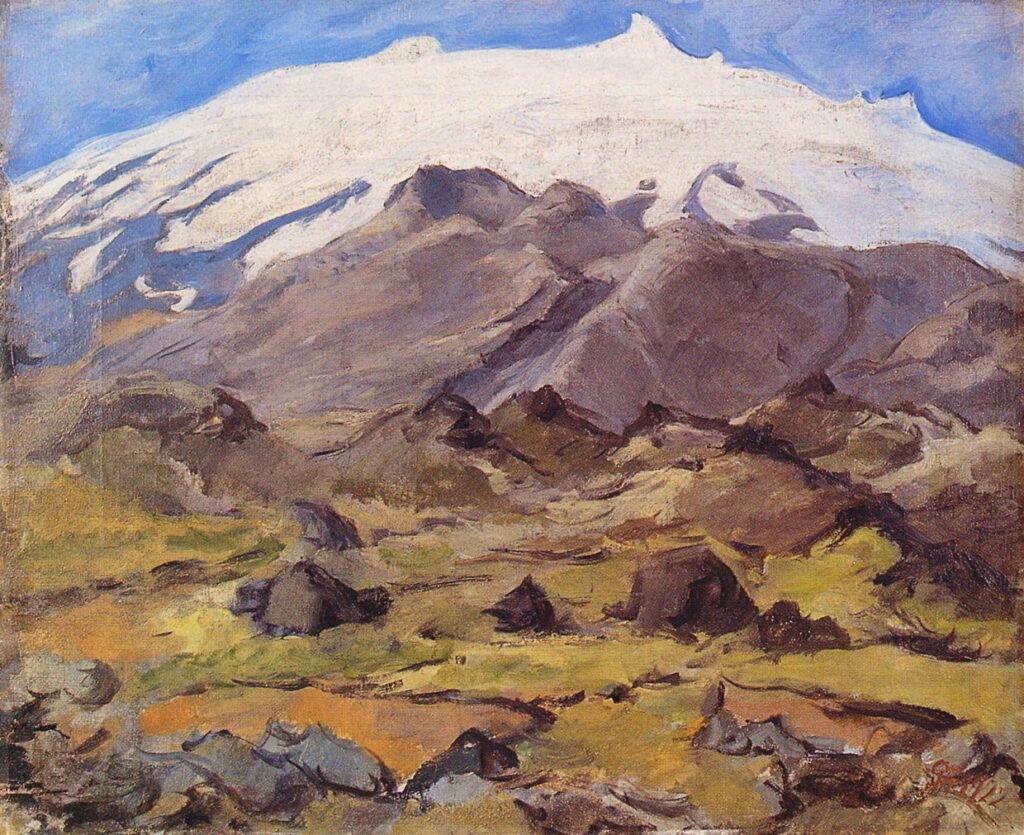Commemorating the death of Muggur, an Icelandic painter

Earlier this month, I looked at the life and work of Þórarinn B. Þorláksson, one of the founding fathers of painting in Iceland. Today I remember one of the following generation, Guðmundur Thorsteinsson (1891-1924), known as Muggur, who died at the age of only 32 a century ago, on 27 July 1924. Although I have little to tell about his life, and only four of his paintings to show, I hope you’ll agree that we should both know and see more.
Muggur was born into one of the most affluent families in Iceland, and spent much of his youth living alternately in Copenhagen, Denmark, and Iceland. In 1911 he started his studies at the Royal Danish Academy of Fine Arts in Copenhagen, and visited Germany and Italy before completing his training in 1915, when he visited the USA.
Guðmundur Thorsteinsson (“Muggur”) (1891-1924), Carrying Coal (1919), further details not known. Wikimedia Commons.
Carrying Coal, painted in 1919, appears influenced by Edvard Munch, and shows cloaked and hooded women processing down a pier to load up with sacks of coal, and carry them back to their village.
Guðmundur Thorsteinsson (“Muggur”) (1891-1924), Seventh Day in Paradise (1920), further details not known. Wikimedia Commons.
Muggur’s painting of the Seventh Day in Paradise from 1920 appears to show the seventh day of creation according to the book of Genesis, when God rested, his labours complete.
Guðmundur Thorsteinsson (“Muggur”) (1891-1924), Christ Cures the Sick (1921), further details not known. Wikimedia Commons.
His triptych Christ Cures the Sick from 1921 is drawn from accounts of Christ’s healing miracles in the Gospels.
In 1921 he wrote and illustrated a children’s book, although it wasn’t published until eighteen years after his death. It was subsequently dramatised in verse, and performed as the ballet Dimmalimm to music composed by his compatriot Atli Heimir Sveinsson (1938-2019).
Guðmundur Thorsteinsson (“Muggur”) (1891-1924), Snæfellsjökull (1922), further details not known. Wikimedia Commons.
Muggur’s painting of Snæfellsjökull (1922) shows one of Iceland’s volcanoes, near Reykjavík in the far west. It last erupted in about 200 CE, and features as the entrance to the passage which takes Jules Verne’s characters in their Journey to the Centre of the Earth (1864). For the whole of recorded history until 2012, its peak and most of its upper reaches have been covered by a glacier. However, as a result of climate change, in August 2012 its summit became free of ice for the first time.
By 1923 his health was deteriorating, and he travelled to France for a ‘cure’ in a spa. He died in Denmark on 27 July 1924 of tuberculosis. Many of his paintings are now in the National Gallery of Iceland.




